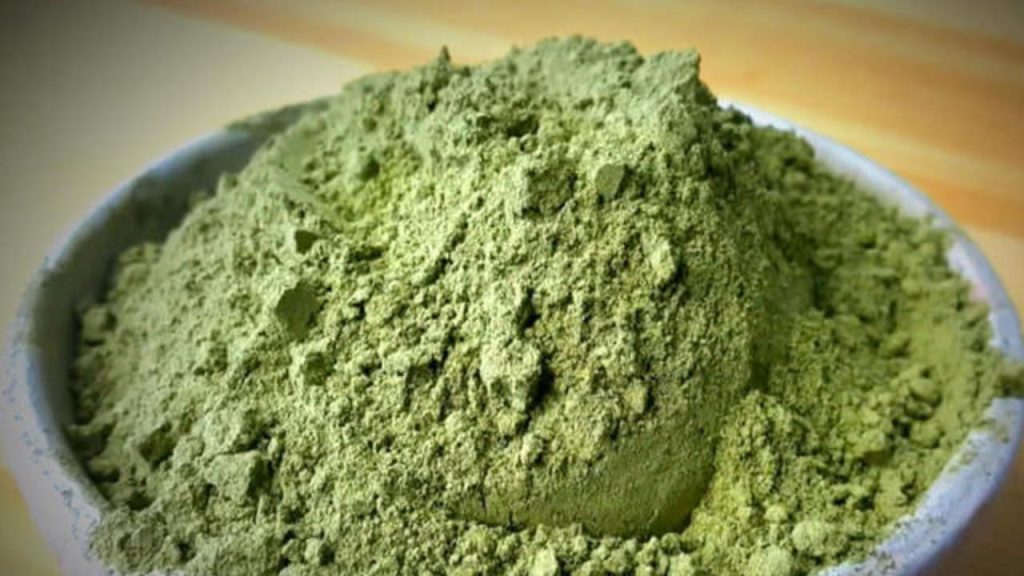Kratom powder, derived from the leaves of the Mitragyna species tree native to Southeast Asia, has gained considerable attention for its potential benefits in enhancing mood, energy, and relaxation. Traditionally used in countries like Thailand and Indonesia, kratom has been embraced by various cultures for its psychoactive properties. The active compounds in kratom, primarily mitragynine and 7-hydroxymitragynine, interact with the body’s opioid receptors, providing effects that can range from stimulating to sedative, depending on the dosage and strain. This versatility makes kratom a unique natural remedy for individuals seeking to improve their overall well-being. For many users, kratom is celebrated for its mood-enhancing properties. At lower doses, it is known to promote a sense of euphoria and elevate mood, often helping those who struggle with anxiety or depression. The uplifting effects can foster social interactions and improve motivation, making it an appealing alternative for individuals looking for natural support in their emotional health.

In addition to its mood-enhancing qualities, most potent green sumatra kratom powder is frequently used as a natural energy booster. Many individuals turn to kratom to combat fatigue or increase productivity, particularly when faced with demanding tasks. The stimulating effects of certain strains can provide a heightened sense of focus and alertness, making it easier to tackle challenges without the jitters often associated with caffeine. As a result, kratom has become a popular choice among students, professionals, and anyone needing an extra push throughout their day. By promoting physical and mental vitality, kratom may help users achieve their goals while maintaining a sense of balance. Moreover, kratom is recognized for its relaxing properties at higher doses. While some may seek it for stimulation, others appreciate its ability to ease tension and promote relaxation after a long day. Many users report that kratom helps alleviate stress and provides a soothing effect, making it an ideal companion for unwinding in the evenings or during times of anxiety.
This duality of effects—energizing at lower doses and calming at higher doses—highlights kratom’s versatility as a natural remedy. It allows users to tailor their experience according to their specific needs and circumstances. However, it is essential to approach kratom with caution and awareness. As with any natural supplement, the effects can vary widely from person to person, and potential side effects, such as nausea or dependency, should be considered. Furthermore, the legality and regulation of kratom can differ by region, so users must stay informed about their local laws. For those interested in exploring kratom as a potential aid for mood enhancement, energy boosts, or relaxation, it is advisable to start with small doses and consults with healthcare professionals if necessary. In summary, kratom powder offers a multifaceted approach to improving mood, energy, and relaxation. Its rich history and diverse applications make it an intriguing option for those seeking natural alternatives to support their mental and physical well-being. Whether used for uplifting spirits, enhancing productivity, or promoting calmness, kratom continues to capture the interest of many looking for nature’s remedies.
Business Trip Massage therapy is a holistic practice that offers numerous benefits for both the body and mind. For centuries, it has been regarded as a natural remedy to alleviate physical discomfort, reduce stress, and promote overall well-being. Today, Business Trip Massage therapy continues to be a popular choice for individuals seeking relief from tension, pain, and fatigue, as well as those simply looking to relax and unwind. The therapeutic touch of a skilled Business Trip Massage therapist can provide a sense of relief, helping the body to heal and rejuvenate naturally. One of the key benefits of Business Trip Massage therapy is its ability to ease muscle tension and pain. Whether caused by physical activity, poor posture, or stress, tight muscles can lead to discomfort and limit mobility. Regular Business Trip Massage sessions help to release the knots and tightness in muscles, promoting relaxation and improved circulation. This not only reduces pain but also enhances flexibility, allowing individuals to move more freely and comfortably.

In addition to its physical benefits, Business Trip Massage therapy is also known for its positive impact on mental and emotional health. The calming effect of Business Trip Massage helps to reduce stress and anxiety, promoting a sense of relaxation and peace. During a Business Trip Massage session, the body’s levels of cortisol, the stress hormone, decrease, while the production of endorphins, the body’s natural feel-good chemicals, increases. This helps to elevate mood, reduce feelings of anxiety, and improve overall emotional well-being. Regular Business Trip Massage can provide individuals with a sense of mental clarity, allowing them to better cope with the pressures of daily life. Business Trip Massage therapy also plays a crucial role in improving sleep quality. Many individuals struggle with insomnia or disrupted sleep due to stress, anxiety, or physical discomfort. By promoting relaxation and reducing muscle tension, Business Trip Massage can help the body unwind before bedtime, making it easier to fall asleep and stay asleep throughout the night.
For those looking to maintain their overall health and wellness, regular Business Trip Massage therapy can serve as an important preventive measure. It helps to improve circulation, boost the immune system, and promote detoxification by stimulating the lymphatic system. Business Trip Massage also supports better posture by addressing muscle imbalances and encouraging proper alignment. By incorporating Business Trip Massage into a regular wellness routine, individuals can enjoy long-term health benefits, including increased energy levels, better flexibility, and improved posture and visit this page. Lastly, Business Trip Massage therapy is a wonderful way to prioritize self-care and mindfulness. In today’s fast-paced world, it is easy to neglect personal well-being in the midst of busy schedules and daily responsibilities. Taking the time to schedule a Business Trip Massage can be an opportunity to focus solely on one’s own needs, allowing the mind and body to recharge.
In today’s fast-paced world, stress has become an almost inevitable part of daily life. From professional pressures to personal responsibilities, many individuals struggle to find effective ways to relax and restore balance. Among the growing number of stress-management tools available, THC syrup has emerged as a unique and increasingly popular option. This concentrated cannabis-infused syrup offers not only potential therapeutic benefits but also a versatile and enjoyable consumption method for those seeking relief from the burdens of modern life. THC syrup is a liquid concentrate that blends THC with a sugary base, creating a sweet and potent product that can be consumed in various ways. Its liquid form makes it easy to measure and mix with beverages, desserts, or other recipes, giving users flexibility in how they incorporate it into their routines. One of the most notable benefits of THC syrup is its ability to alleviate stress. When consumed in appropriate doses, THC interacts with the body’s endocannabinoid system, a network of receptors that helps regulate mood, stress, and overall well-being.

By binding to these receptors, THC can promote a sense of relaxation and mental clarity, helping to quiet racing thoughts and reduce feelings of anxiety. For individuals who struggle with chronic stress or occasional overwhelm, this soothing effect can be invaluable. In addition to its calming properties, THC syrup can also contribute to physical relaxation. Stress often manifests in the body as tension, muscle tightness, or even pain. The anti-inflammatory and analgesic effects of THC may help alleviate these symptoms, offering a comprehensive sense of relief. This dual-action addressing both the mind and body makes THC syrup a powerful ally in combating the multifaceted effects of stress. Another advantage of THC syrup is its fast-acting nature. When consumed sublingually under the tongue or mixed into beverages, it can take effect more quickly than traditional edibles, which must first be digested. This makes it particularly appealing for individuals seeking immediate relief after a long day or during moments of acute stress. Beyond its therapeutic benefits, THC syrup also stands out for its convenience and discretion.
Unlike smoking or vaping, which can draw attention and may not be suitable in all settings, THC syrup is odorless and easy to consume. This makes it an ideal option for those who prefer a subtler approach to cannabis consumption. It is important to note, however, that moderation and mindfulness are key when using THC syrup. Overconsumption can lead to unwanted side effects, such as drowsiness, impaired coordination, or heightened anxiety. For newcomers, starting with a low dose and gradually increasing as needed is the safest way to explore its benefits. Consulting with a healthcare professional or knowledgeable dispensary staff can also provide valuable guidance. THC Syrup offers a sweet and effective solution for managing stress and promoting relaxation. Its versatility, rapid effects, and dual impact on mental and physical well-being make it a compelling choice for those looking to unwind in a natural and enjoyable way. As the stigma surrounding cannabis continues to fade, products like THC syrup are paving the way for a more holistic and personalized approach to stress management, allowing individuals to reclaim their sense of calm and balance in an increasingly chaotic world.